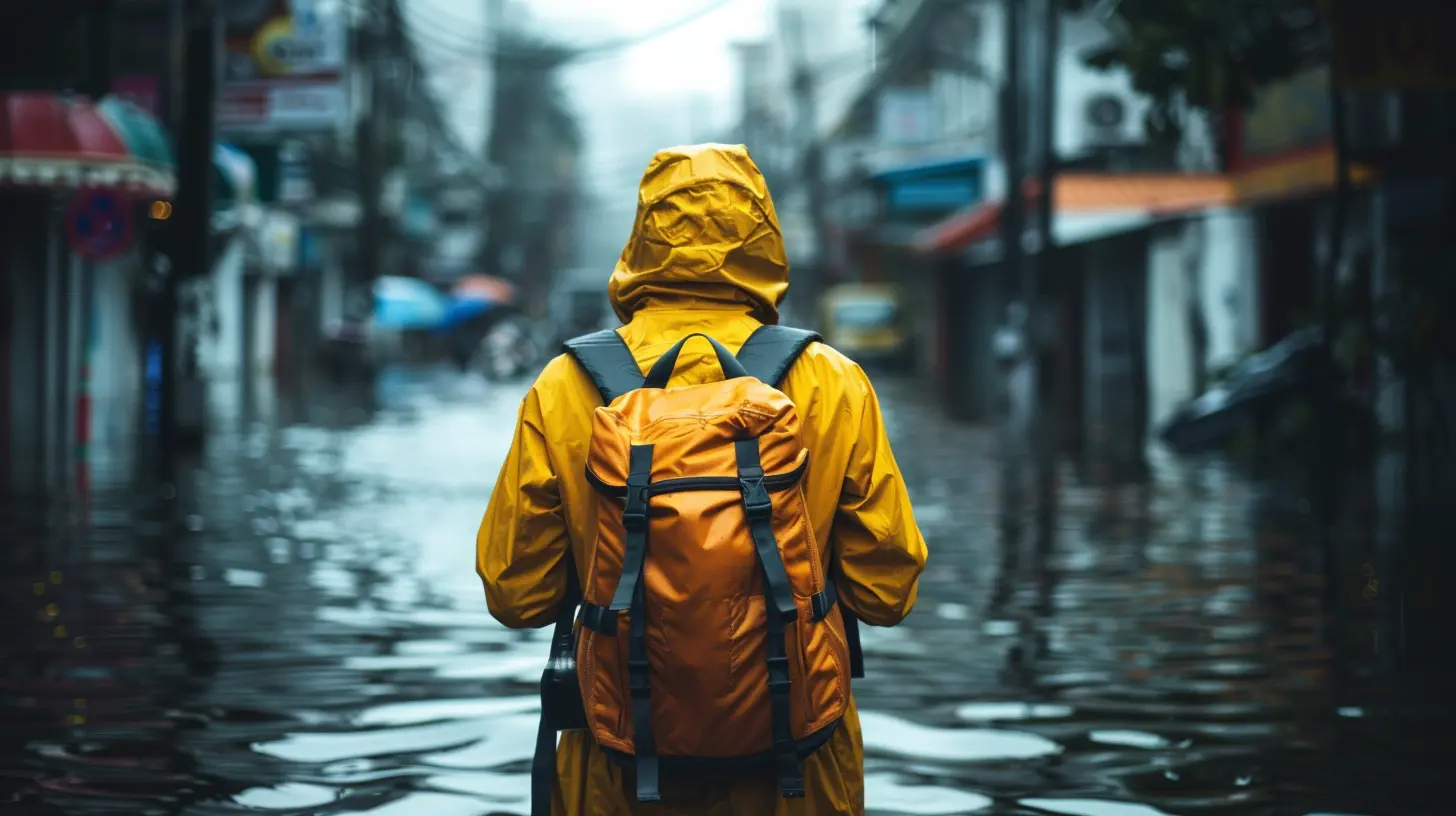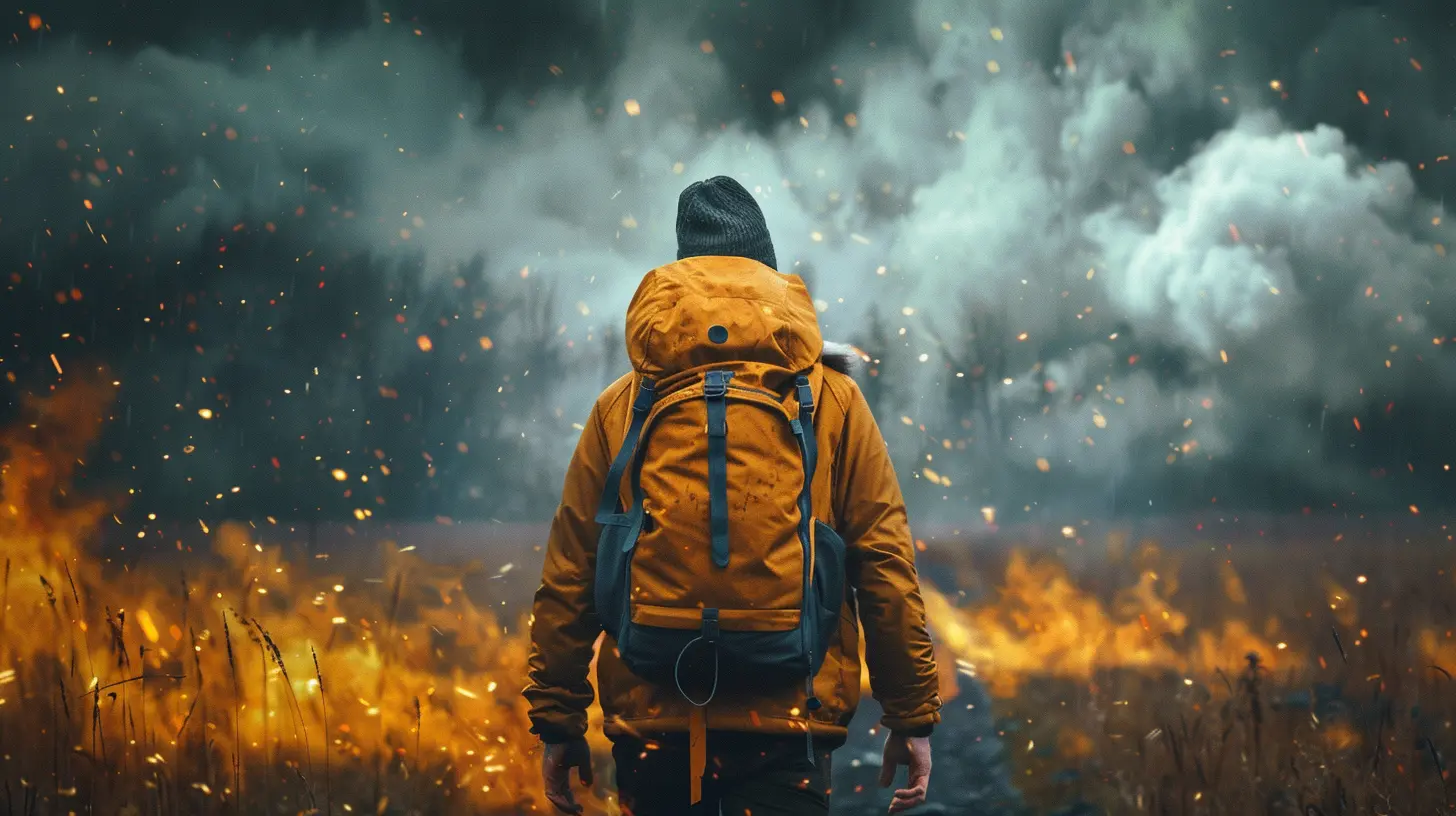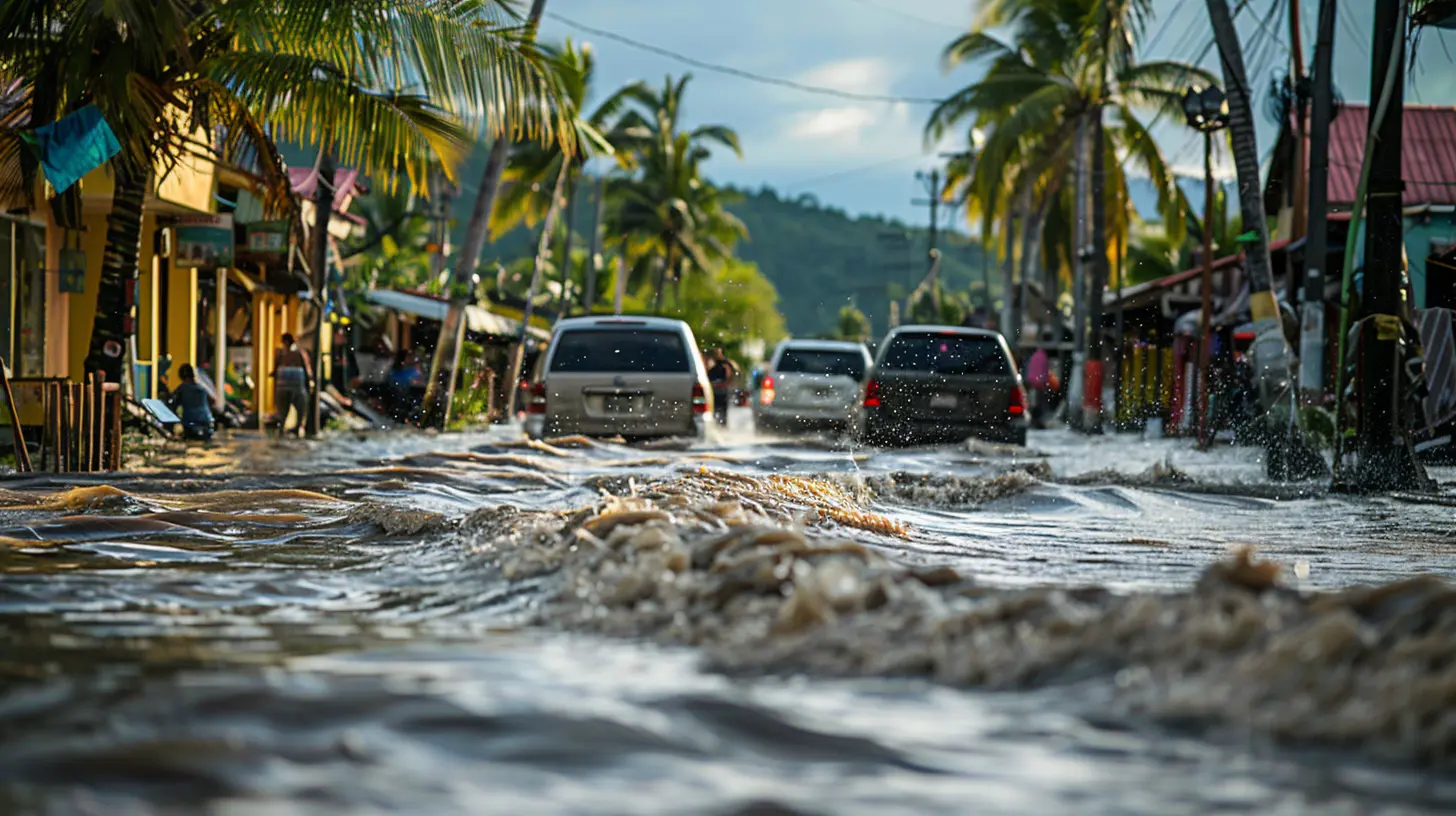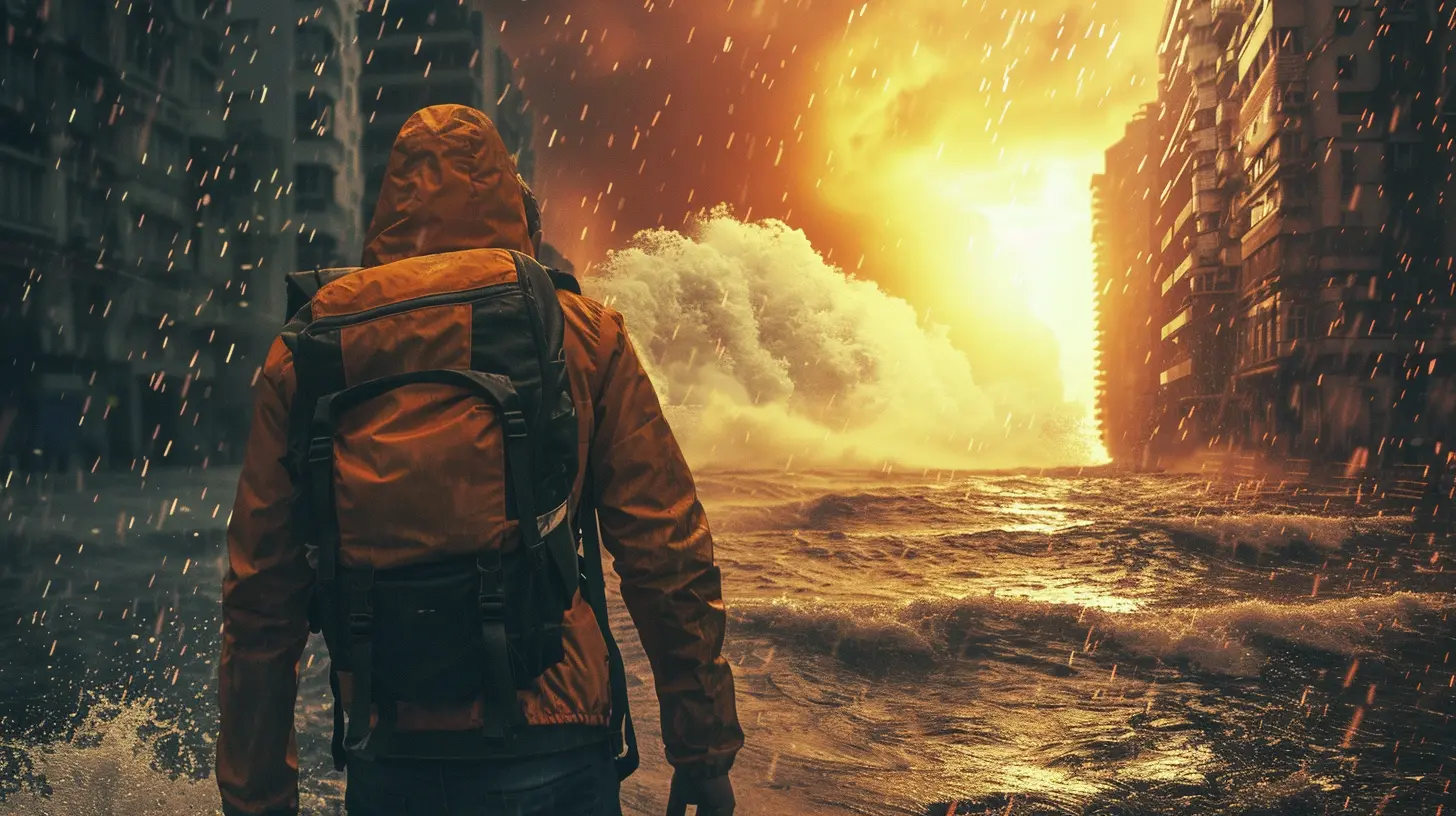How to Stay Safe During Natural Disasters While Traveling
1 August 2025
Traveling is an adventure—an opportunity to see breathtaking landscapes, meet new people, and immerse yourself in different cultures. But what if nature suddenly decides to throw a curveball? Earthquakes, hurricanes, floods, or wildfires can strike without warning, turning your dream trip into a real-life survival scenario.
So, how do you stay safe when disaster strikes while you're far from home? Let’s break it down. 
1. Research Before You Go
Before you even step on that plane, a little homework can go a long way. Some destinations are more prone to natural disasters than others.Check Weather and Seasonal Risks
Different regions have different hazards. Traveling to Southeast Asia during monsoon season? Expect heavy rains and potential flooding. Heading to California in the summer? Wildfires might be a concern.Check government travel advisories, local weather trends, and news reports before you finalize your plans. Websites like:
- National Weather Service (NWS)
- The World Meteorological Organization (WMO)
- Local Meteorological Offices
…can give you real-time updates.
Know the Emergency Contacts
Save local emergency numbers on your phone. Not all countries use 911! For example:- Europe: 112
- Australia: 000
- Japan: 119 for fire/ambulance, 110 for police
A quick Google search can provide the emergency numbers for your destination. 
2. Pack a Mini Survival Kit
You don’t need to haul a 30-pound survival bag, but carrying a few essentials can make a big difference.Must-Have Items:
✔ Portable Charger (Power Bank) – Phones are lifelines in emergencies.✔ Flashlight or Headlamp – Blackouts happen. Be prepared.
✔ First Aid Kit – Bandages, antiseptic wipes, necessary meds.
✔ Emergency Whistle – If you’re trapped under debris, this could save your life.
✔ Multi-Purpose Tool – Swiss Army knives can be surprisingly useful.
✔ Bottled Water & Snacks – If you're stranded, a little sustenance helps.
✔ Copies of Important Documents – Passports, visas, and identification (both digital & physical).
If you’re going to a disaster-prone area, you might even consider a small emergency radio. 
3. Have an Emergency Plan
Nobody wants to think about worst-case scenarios while sipping a cocktail on the beach, but having a plan can save precious time when disaster strikes.Locate the Nearest Exit & Evacuation Routes
The moment you check into your hotel, take a moment to check the emergency exits. Know where the stairs are. If you’re near the coast, be aware of tsunami evacuation routes.Stay in Touch with Loved Ones
Before traveling, let someone know your itinerary. If disaster strikes and the internet goes down, they’ll at least have a general idea of your location.Using apps like Google Maps Offline, WhatsApp, and Crisis Alert Apps can be helpful when connectivity is an issue. 
4. How to Handle Different Natural Disasters
Now, let’s get into the specifics. Each disaster requires a different approach.Earthquakes
🔺 During: Drop, Cover, and Hold! If indoors, stay away from windows and heavy furniture. If outdoors, move away from buildings and power lines.🔺 After: Expect aftershocks. Avoid damaged buildings and be cautious of gas leaks.
Hurricanes & Typhoons
🌪️ Before: If a hurricane is forecasted, follow evacuation orders. Stock up on water and non-perishable food.🌪️ During: Stay indoors, away from windows. If local officials direct you to evacuate, GO IMMEDIATELY.
🌪️ After: Avoid flooded areas, as water may be contaminated or have hidden debris.
Tsunamis
🌊 Before: If you're near the coast and feel an earthquake, move to higher ground immediately.🌊 During: Stay as high as possible. Tsunamis come in waves—don’t assume the danger is over after the first hit.
🌊 After: Listen to authorities before returning to lower areas.
Floods
💦 Before: If there’s heavy rainfall or flood warnings, have an evacuation plan ready.💦 During: Avoid walking or driving through floodwaters—just 6 inches of moving water can knock you down.
💦 After: Watch out for weakened bridges and contaminated water sources.
Wildfires
🔥 Before: If wildfires are common where you’re traveling, keep a mask handy (smoke inhalation is no joke).🔥 During: If trapped, find a body of water to stay near and cover your nose/mouth with a damp cloth.
🔥 After: The air quality might still be poor—avoid unnecessary exposure.
5. Should You Evacuate or Shelter in Place?
The biggest question during any natural disaster—stay or go?- If authorities tell you to evacuate—DO IT. Waiting too long can trap you in dangerous conditions.
- If you’re stuck inside, shelter in place. Find a safe room, stay updated via local news, and don’t open doors unnecessarily.
If you need to leave in a hurry, having a GO-BAG (backpack with essentials) can be a lifesaver.
6. Stay Informed with Real-Time Alerts
In many countries, emergency alerts are sent via text messages. However, having a backup plan never hurts.Useful Apps for Alerts & Emergency Instructions:
📌 Google SOS Alerts – Provides real-time disaster updates.📌 Red Cross Emergency App – Covers various types of disasters.
📌 FEMA App (For U.S. Travelers) – Alerts for natural disasters and shelter locations.
Also, follow local news outlets or government agencies on Twitter for up-to-date information.
7. What to Do If You Get Separated from Your Group
Disasters can cause chaos, leading to separated families or friend groups. If that happens:✅ Set a Meeting Point in Advance – A landmark where everyone can regroup.
✅ Use Social Media or Emergency Check-In Features – Facebook Safety Check can let people know you’re safe.
✅ Ask Locals for Help – They know the area better than you.
If communication is down, head to a local embassy or emergency shelter.
Final Thoughts
Natural disasters are unpredictable, but that doesn’t mean you have to be unprepared. A little planning, awareness, and quick thinking can make all the difference.When you travel, stay curious, stay adventurous—but most importantly, stay safe!
all images in this post were generated using AI tools
Category:
Travel SafetyAuthor:

Ian Powell
Discussion
rate this article
2 comments
Hesper McCarty
Preparedness enhances travel safety.
November 20, 2025 at 4:17 AM

Ian Powell
Absolutely! Being prepared equips travelers with the knowledge and tools needed to respond effectively during emergencies, greatly enhancing safety.
Soliel McGuffey
Adventure beckons, but safety should always be your trusty companion. Equip yourself with knowledge and preparedness—your best travel gear against natural disasters. Remember, a smart traveler stays one step ahead; don’t let Mother Nature steal the spotlight from your journey!
August 3, 2025 at 3:10 AM

Ian Powell
Thank you for emphasizing the importance of preparedness! Staying informed and equipped truly empowers travelers to enjoy their adventures safely.


